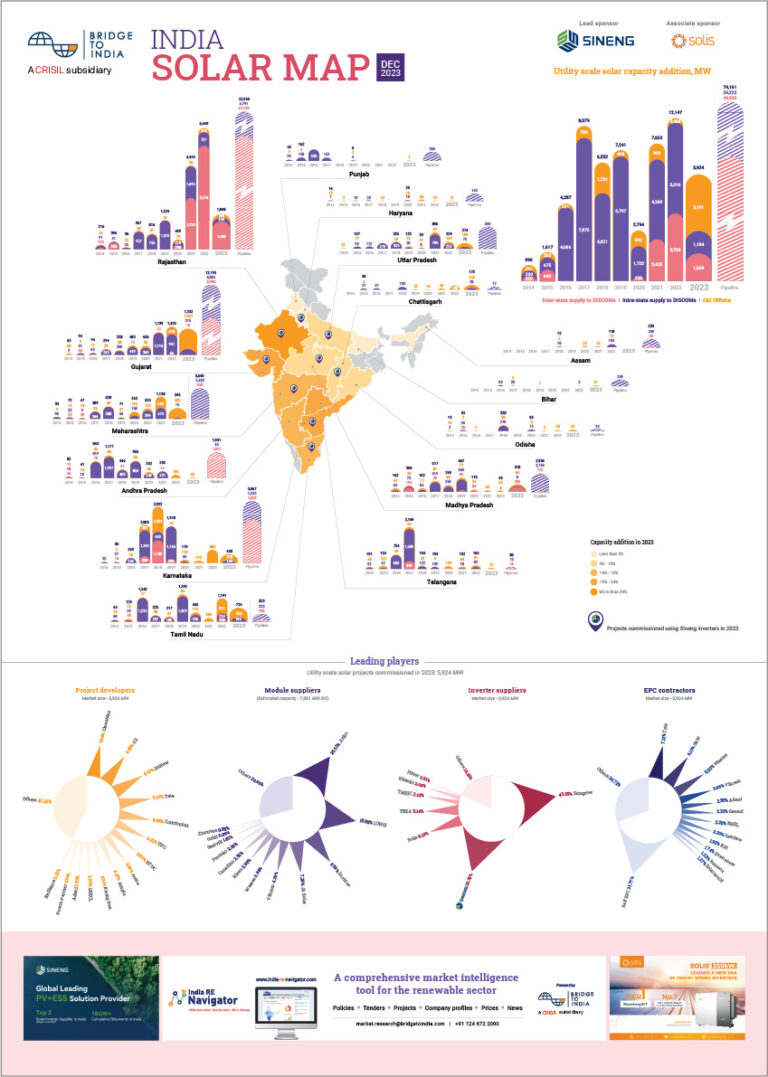In the past, China and the US, who together accounted for over 40% of global carbon emissions, rejected any official targets with respect to reductions. The recent development has been indicative, for the first time ever, they have committed to carbon targets. India is in a delicate position. On the one hand, it is already the world’s fourth largest emitter. On the other, its per capita emissions are still amongst the lowest in the world. (China’s, by comparison, have already caught up with Europe’s.)
- India is planning to invest into climate friendly technologies such as renewables and energy efficiency in any case
- Coal power in India needs to be ramped up, then phased out
- India can now push the narrative and force more cuts on other emitters

Image source: Straight.com
There is, unfortunately, still a strong correlation between emissions, energy use and economic development. Hence, India will emit much more, as its people become better off, contributing significantly to global climate change. At the same time, India, with it’s high population density and widespread subsistence farming, is intensely vulnerable to climate change. It needs both: room to emit more and a climate deal that can credibly limit climate change, which means asking China, the US and the EU to do more and exerting strong pressure on developed countries, such as Australia, Canada and Japan, that stall completely.
India, with its anticipated, massive push for renewables could easily advocate for ‘investment into climate-friendly technologies’ as a global parameter – in absolute or relative terms. India still has the opportunity to leapfrog towards a more climate-friendly energy economy and infrastructure. It will be cheaper for India to invest into new, climate friendly technologies than it will be for developed countries with existing infrastructures and path dependencies to do so.
Within India itself, more measures can be taken to poster the Indian climate contribution without slowing down growth. India could set up an internal carbon cap-and-trade market, much like China is planning to do. If the overall cap is set at a business as usual scenario, then the economic effect should be zero. However, within India, resource smart companies would be rewarded and resource inefficient ones would be penalized. This would help reduce overall resource consumption (and thus emissions) and speed up a transfer of knowledge within the country. Additionally, local environmental pollution should be priced. This will avoid some of the worst excesses and will be much cheaper than remedying landscapes and livelihoods at a later stage. Again China, which failed to do this, is an instructive example. Lastly, why not host a climate summit in India soon? What better way of showing that India means climate business.
In addition to building up solar, India also plans a major push on coal. It is difficult to see an alternative to much more coal usage in the medium term. However, as the Chinese example shows, the local environmental pollution (including air quality) effects and the social disruption associated with the mining, transport and usage of coal are so significant that it will soon be economically and politically prudent to start reducing significantly the share of coal in the energy mix.
In light of the above, India needs to change track in its climate policy. Its stance has been far too reactive and inflexible. India needs to become a driving force in making a substantial global deal happen. Here are a couple of ideas as starting points for such a policy:
India needs to forge the right alliances with those countries that have a serious commitment to the climate change goals. These are the most vulnerable states on the one hand (island and developing states) and the EU on the other. The ‘right to emit’ and the ‘vulnerability’ have to be de-coupled. India can fight for its right to emit while all the same pushing for a deal. In the past, India has lined up with China, which was a mistake. Far from being a natural ally, China emits at India’s expense.
India could push for a metric that not only considers where pollution is generated, but also where the products and services are consumed. A key reason for China’s massive growth in emissions was an ‘export’ of emissions. Take the following case, for example: The US company Apple sells an iPhone to a customer in the US that was manufactured in China. The emissions accrue to China, but perhaps not in the same way as the associated profits or benefits do. Associating emissions with consumption goes into the direction of a carbon tax. Such a tax on carbon could give India more room to pursue Modi’s ‘Make in India’ industrialization strategy while passing a share of the carbon bill to global consumers. The crux, of course, is in the question where the taxes are levied and what they are used for. If they are levied at the consumer, then the proceeds to go into the global climate fund.
Tobias Engelmeier is the Founder and Director of BRIDGE TO INDIA












